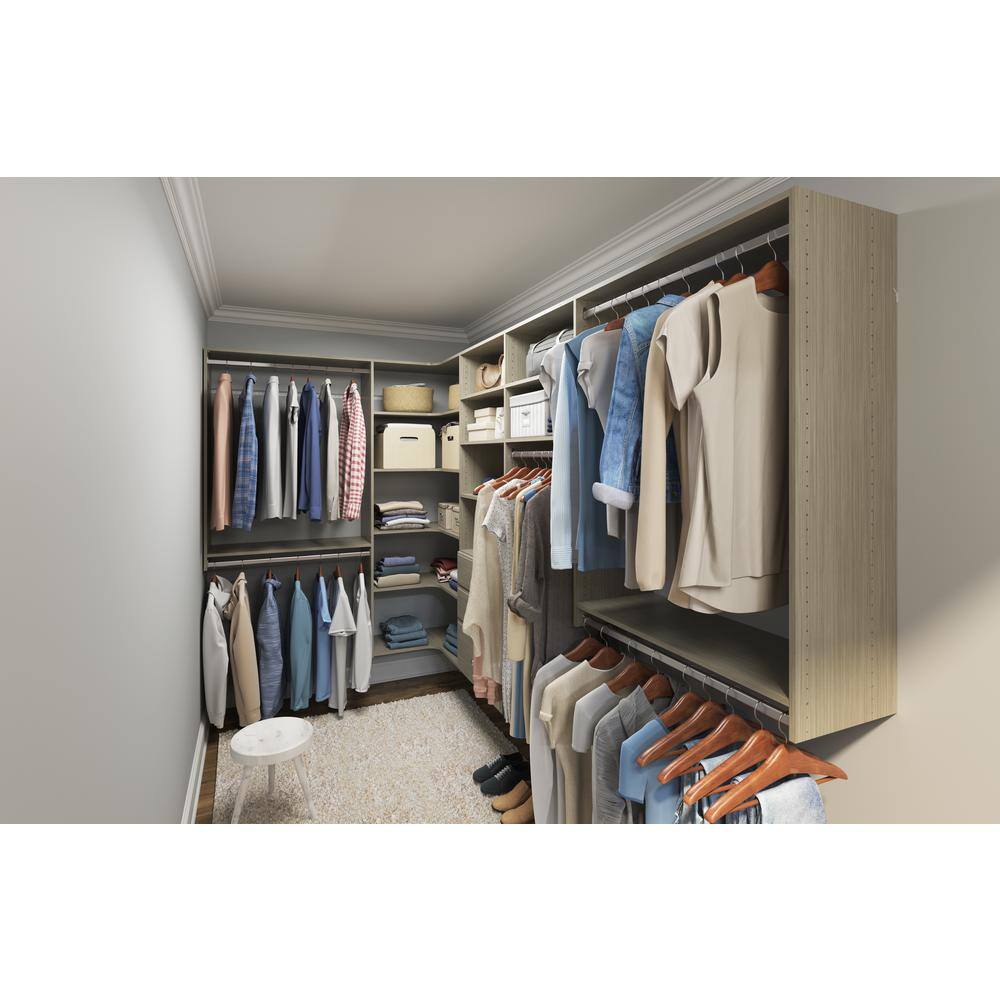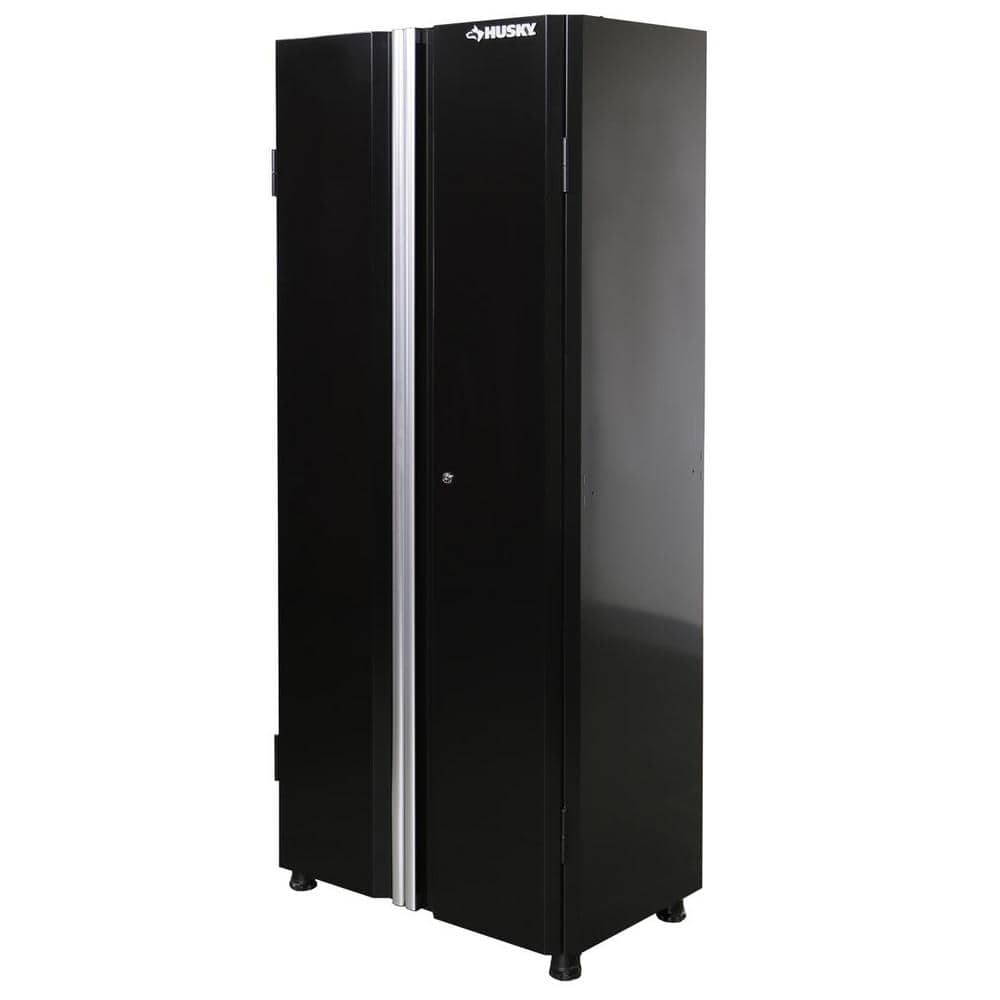Closet Evolution Ultimate 84 in. W – 115 in. W Rustic Grey Wood Closet Corner System
Wall-mounted system keeps everything organized and off the floor. Includes everything needed for a full installation. Durable 5/8 in. thick laminate has a scratch resistant surface.
The Closet Evolution ultimate corner kit is easy installation and organization at from beginning to end. This box includes everything you need to complete your closet as well as 49 ft. of shelf space and 14 ft. of hanging space. For an easy install, the Closet Evolution closet system hangs on wall-mounted steel rails and comes with all of the required installation hardware.
- Fits closet sizes from 3.5 to 5.5 ft. on the short wall and 6.5 to 9.5 ft. on the long wall
- Kit hangs on the wall, so you do not have to remove or cut baseboards
- Corner shelving to maximize your closet space
- Rods and shelves are cut-to-fix for the perfect fit in any closet space
- 3-drawers for concealed storage
- Shelves and vertical panels have a durable scratch-resistant laminate surface
- Includes all required hardware
- Kit ships in 9 individual boxes
- Limited lifetime warranty
Additional information
| Assembled Depth x Height x Width (in.) | 14 x 72 x 115 |
|---|---|
| Manufacturer Warranty | Limited Lifetime Warranty |






by Bob
Great addition overall to our closet. We replaced the generic, contractor-grade setup that was originally in our home with this system. Took a little getting used to, but once adjusted it went up pretty quickly. I installed it by myself – didn’t need two people – over the course of about three weekends (a few hours at a time). You’ll definitely need to empty your closet completely beforehand. Some parts of the instructions made me scratch my head, but after reading and re-reading it made sense. Didn’t need to use a hacksaw at all, as the entire system fit in our closet. Some pieces arrived slightly compromised or damaged, but weren’t unusable. Came in nine boxes total, was able to carry them all (one at a time) into the house.
by Debbie
Like my new closet organizer, really extends the amount of space. It was fairly easy to install although the drawers fit very tight on the tracks.
by Gene
The installation of the closet system requires significant patience & persistence. This instructions are a challenge to follow and understand. YouTube videos on installing EasyClosets were of some help. The system is a tremendous improvement over our previous design and fully meets my expectations.
by Rebecca
Looks beautiful! More difficult to assemble off floor but worth it.
by Tam
Love the new closet! Was adjustable enough to make for. Even had extra shelving that I cut and added shoe racks!
by Maggie
Well designed for walk-in closet. Product is well made, consistent with cost. I added the shoe tower, which made it perfect for my needs. According to contractor, the instructions weren’t easy the follow and weren’t always accurate, requiring some innovation. As the customer, I’m very pleased with the results.